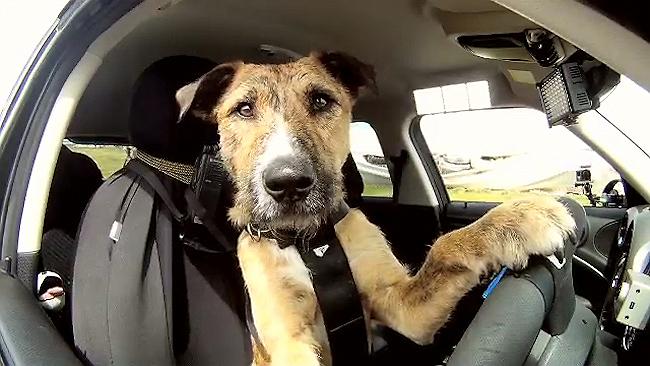
Recently dog restraints for cars have come to light as not being as safe as they’re meant or advertised to be. Before you jump to conclusions, it is important to look at the type and number of restraints that were tested. It is certainly a step in the right direction for consumers to begin looking at car seat belts, harnesses and crates that have been “crash tested”. After all, safety for our pets is our number one concern.
Several states now require that pets be restrained when traveling in a motor vehicle. In states such as Arizona, Connecticut, New Jersey, and Maine, you can be fined from $200. to $1,000. if you are caught driving with your dog in your lap. Legislatures in other states are looking at driving with a pet in your lap as akin to texting or driving under the influence and are putting forth bills to prevent this from happening.
Seat belts and other car restraints protect you from being distracted by your pet. They in turn protect your pet from being tossed about in the car due to sudden stops or sharp turns. In a collision, an unrestrained pet is like a flying projectile which can be slammed into a dashboard or window or even thrown from a vehicle. Many unrestrained dogs like to stick their heads out of the windows which can subject them to eye or nose injuries from flying debris. An open window at a stop sign might entice your pet to jump out if he sees something interesting walking by.
There are many types of restraints that are available to help keep your pet comfortable and ensure his safety on the road. A seat belt or harness will secure a dog, with limited mobility, allowing them to sit or lay down in one place. A tether can be attached to a harness to give your pet a bit more mobility in the back seat. There are soft-sided dog crates for smaller dogs that can be belted into the passenger front seat that can be coordinated with the car’s airbag. A crate or kennel made to have a seatbelt strapped to it for larger dogs is used in the back seat. If the dog is very large, a crate can be placed in the cargo area or a steel grate can be used to separate the cargo area from the rest of the car. The area should be well padded.
When looking at safety harnesses, choose ones with thick, padded straps to protect your dog’s chest and distribute the force of any impact or sudden stop or swerve. The fasteners and tether should be strong and well-constructed. Do not have too much play in the tether and be sure it fastens at the dog’s back, not at the neck.
If you decide to use a crate, choose one that is not make of a brittle plastic material. Go for the sturdier plastics and other materials that won’t shatter. It is best if the crate is positioned lengthwise to the seat and secured with more than a seatbelt. Use wide, heavy duty luggage straps as well. Having a mechanic install anchors for these would be a good idea.
Remember that you would not allow your human passengers to ride with you unprotected by seatbelts. Your pets deserve the same care. Enjoy your travels together!





Leave a Reply